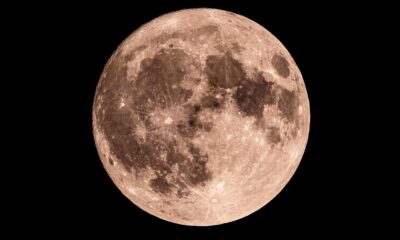Science
Study Challenges Long-Standing Beliefs About Caribbean Rainfall Patterns

A recent study published in Science Advances has challenged long-held beliefs about the relationship between summer insolation in the Northern Hemisphere and rainfall patterns in the Caribbean. Researchers have discovered that, contrary to previous assumptions, periods of stronger summer insolation may actually correlate with diminished rainfall in the region.
The research presents a detailed rainfall reconstruction spanning 129,000 years, derived from cave formations in Cuba. This new data indicates that the Caribbean often experienced drier conditions during intervals of intensified summer insolation, which contradicts the traditional notion that more sunlight leads to increased rainfall in tropical regions.
New Insights into Climate Patterns
The findings emerge from an analysis of isotopic data collected from stalagmites in a Cuban cave. These formations serve as natural archives, preserving climate information over millennia. The research team meticulously dated these layers, revealing that the Caribbean’s climatic response to solar radiation is more complex than previously understood.
This study emphasizes the importance of regional climatic influences, particularly the role of the Atlantic high-pressure system. Researchers found that shifts in this system can significantly impact rainfall, demonstrating that factors such as atmospheric circulation patterns may play a more crucial role than solar radiation alone.
The implications of this research extend beyond academic interest. Understanding these rainfall patterns is essential for predicting future climate scenarios, especially in light of ongoing climate change. The Caribbean region is particularly vulnerable to shifts in weather patterns, which can affect agriculture, water supply, and overall ecosystem health.
Broader Climate Implications
The research adds to a growing body of work that calls for a reevaluation of how climate scientists interpret historical climate data. By identifying a potential disconnect between solar insolation and rainfall, the study encourages further investigation into other environmental factors that may influence weather patterns.
As the world grapples with climate change, insights from studies like this one are vital. They not only enhance our understanding of historical climate dynamics but also improve our ability to forecast future changes. Policymakers, environmentalists, and scientists alike can benefit from this research as they work towards developing sustainable practices in the face of a changing climate.
This study marks a significant step in climate research, illuminating the complex interplay of factors that shape weather patterns in the Caribbean and potentially reshaping our understanding of tropical climates worldwide.
-

 Entertainment3 months ago
Entertainment3 months agoAnn Ming Reflects on ITV’s ‘I Fought the Law’ Drama
-

 Entertainment4 months ago
Entertainment4 months agoKate Garraway Sells £2 Million Home Amid Financial Struggles
-

 Health3 months ago
Health3 months agoKatie Price Faces New Health Concerns After Cancer Symptoms Resurface
-

 Entertainment3 months ago
Entertainment3 months agoCoronation Street’s Carl Webster Faces Trouble with New Affairs
-

 Entertainment3 months ago
Entertainment3 months agoWhere is Tinder Swindler Simon Leviev? Latest Updates Revealed
-

 Entertainment4 months ago
Entertainment4 months agoMarkiplier Addresses AI Controversy During Livestream Response
-

 Science1 month ago
Science1 month agoBrian Cox Addresses Claims of Alien Probe in 3I/ATLAS Discovery
-

 World2 weeks ago
World2 weeks agoBailey Announces Heartbreaking Split from Rebecca After Reunion
-

 Health4 months ago
Health4 months agoCarol Vorderman Reflects on Health Scare and Family Support
-

 Entertainment4 months ago
Entertainment4 months agoKim Cattrall Posts Cryptic Message After HBO’s Sequel Cancellation
-

 Entertainment3 months ago
Entertainment3 months agoOlivia Attwood Opens Up About Fallout with Former Best Friend
-

 Entertainment2 weeks ago
Entertainment2 weeks agoCoronation Street Fans React as Todd Faces Heartbreaking Choice





















